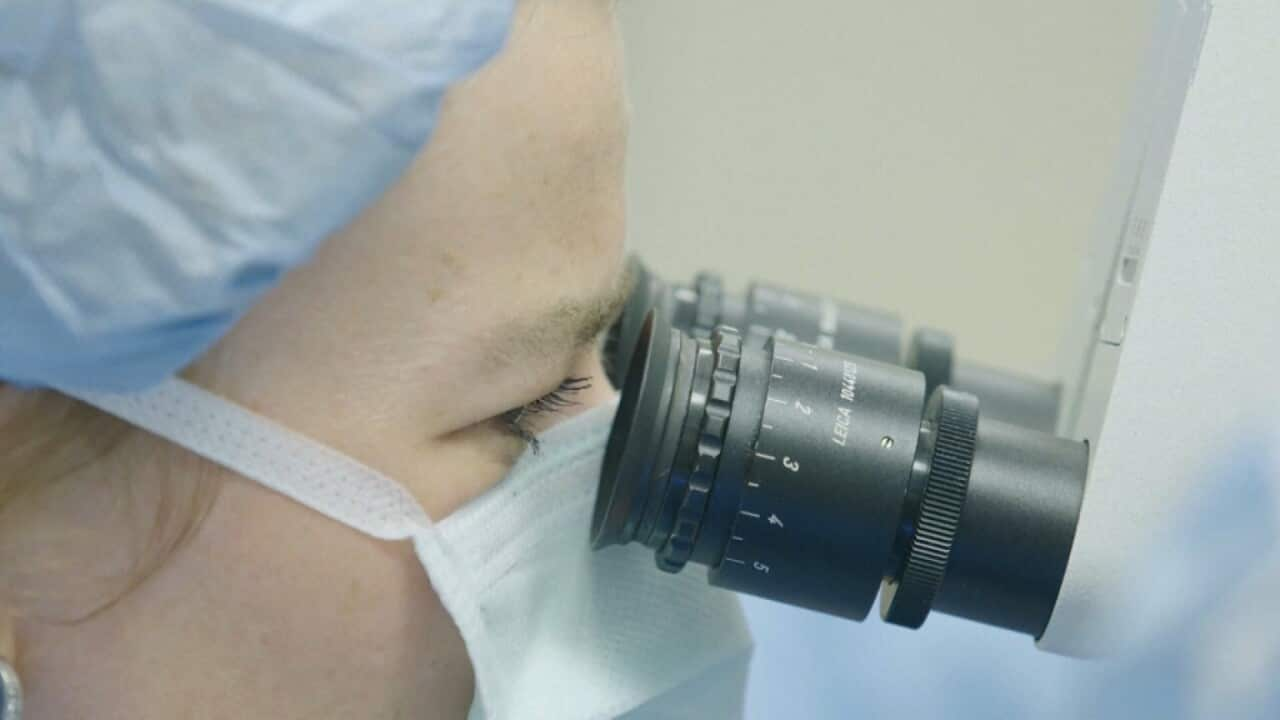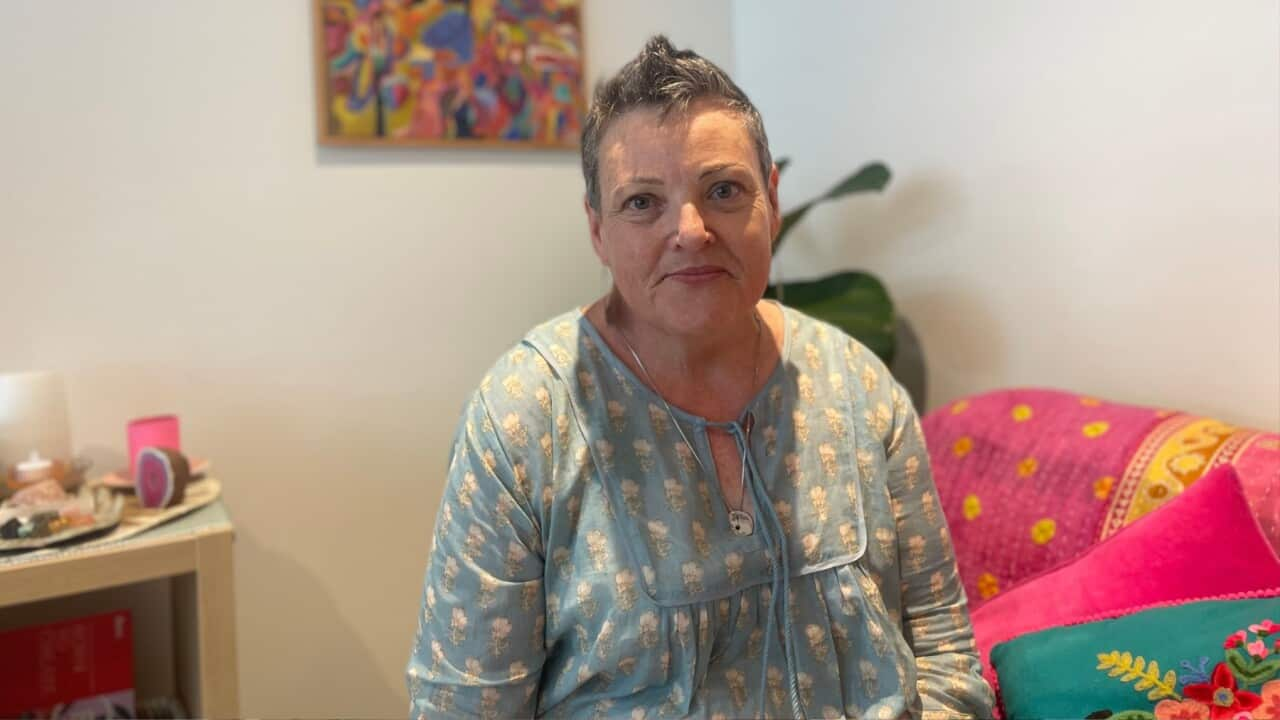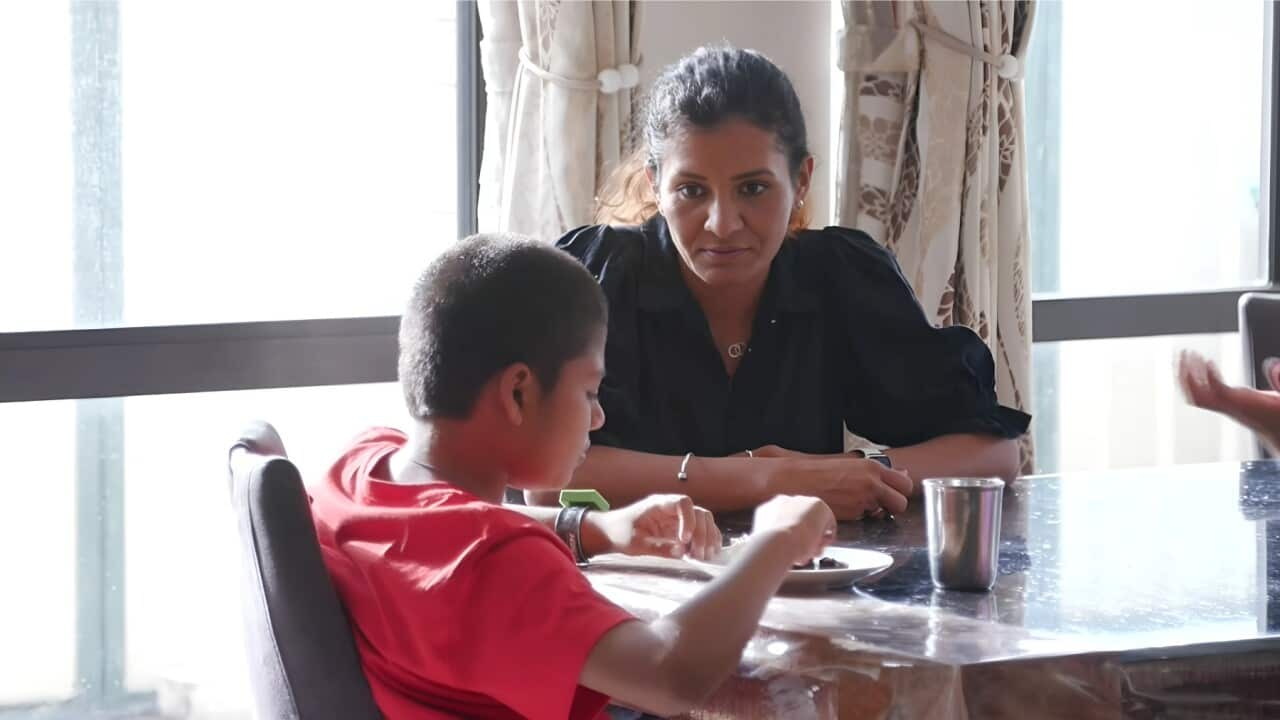TRANSCRIPT
"I just yell. 'Tim call 911' because I know this is not good. And I go over to the sink and I'm trying desperately to pull my eye open to try to flush it."
Phil Durst recalls having to scratch his face after a chemical from a commercial dishwasher squirted into his eye, causing what he says was the most indescribable pain he has ever felt.
The 51-year-old man from the U-S state of Alabama suffers from limbic stem cell deficiency, a corneal disorder that can occur after chemical burns and other eye injuries
In his case, it was a work accident in 2017 that burnt his left eye and took away his vision, leaving him unable to tolerate light and causing four to five headaches a day.
Dr Ula Jurkunas, associate director of the Cornea Service at Mass Eye and Ear, the world's largest vision and hearing research centre - explains that the causes of limbal cell loss can be varied.
"The diseases are commonly caused by chemical burns, infections, contact lens wear and many other reasons."
Mr Durst had recently undergone an experimental procedure that aimed to treat severe damage in one eye with stem cells from the other.
He was the first of four patients to undergo the procedure.
The results of the initial stage of the research were published [[18 AUG]] in the journal Science Advances, and a larger study is underway.
Dr Ula Jurkunas explains more about the procedure.
"In this study we're able to use patient's own stem cells from the healthy eye and regenerate the stem cells in the diseased eye. We started this project in 2006 when I was a junior faculty, and doing this type of procedure seemed like an insurmountable task. No one was doing it, and we had to start from the beginning"
The experimental technique expands and develops the extracted stem cells into a graft in a laboratory at the Dana-Farber Cancer Institute in Boston.
A few weeks later, they are sent back and transplanted into the damaged eye.
Mr Durst was the first patient to undergo the procedure in 2018, and his results have been promising.
He says the study has changed his life.
"I went from completely blind, debilitating headaches, pondering if I could go another day, like really thinking I can't do this anymore. To now - and I don't know what else to say, if Dr Jurkunas had not decided that this is something that we need, I probably wouldn't be here today because everybody else said there's nothing we can."
Dr Jurkunas says the technique could one day help thousands of people.
Stem cell research has been underway for nearly two decades and experts say that stem cell transplantation offers hope to people with few or no other options.
Dr Jurkunas says the research works in stages, but the mission is clear.
"The goal of the surgery is to, first of all, improve patient's symptoms so they don't have pain, light sensitivity. And then, of course, to restore vision."
All patients in the study saw their cornea surfaces restored, and is currently receiving ongoing treatment.
Researchers are finalizing the next phase of the clinical trial, which includes 15 patients.













